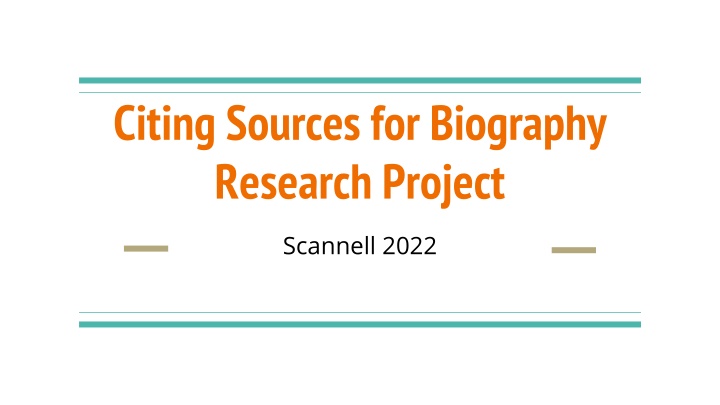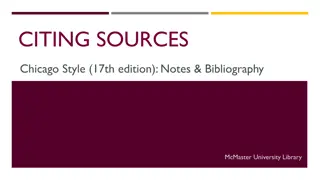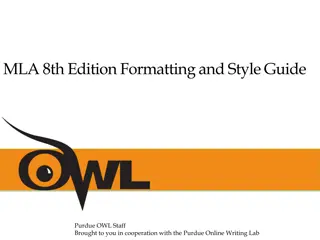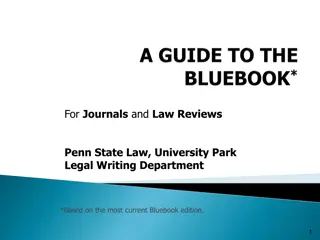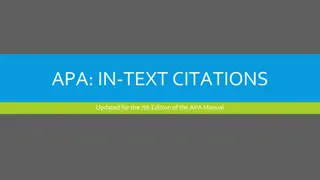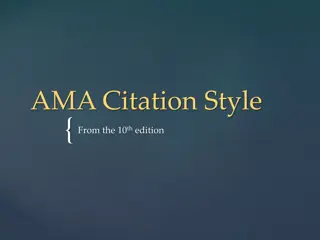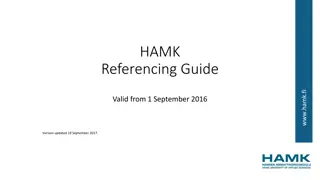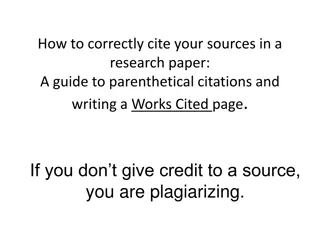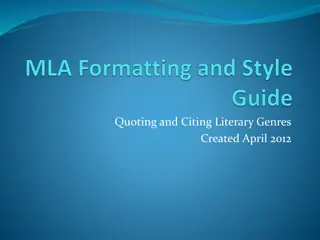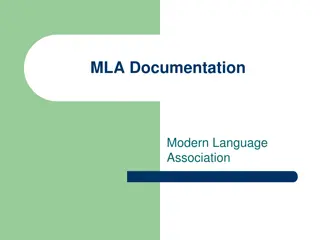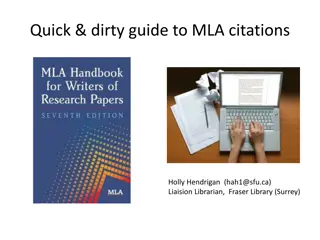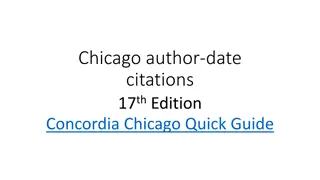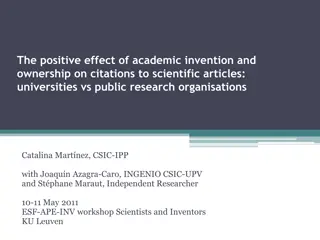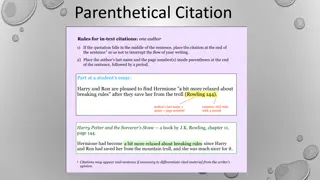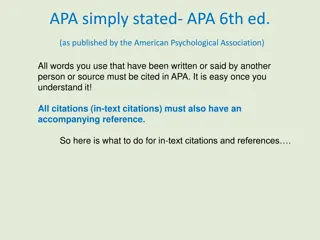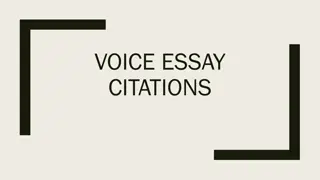Citing Sources and In-Text Citations for Biography Research Projects
Explore the essential guidelines for citing sources and creating in-text citations for biography research projects. Learn how to correctly cite quotes or images, locate missing information, and format Works Cited entries accurately. Master the art of referencing articles, websites, organizations, and multimedia sources to enhance the credibility and reliability of your research. Empower yourself with the knowledge to attribute information ethically and effectively in your biographical studies.
Download Presentation

Please find below an Image/Link to download the presentation.
The content on the website is provided AS IS for your information and personal use only. It may not be sold, licensed, or shared on other websites without obtaining consent from the author.If you encounter any issues during the download, it is possible that the publisher has removed the file from their server.
You are allowed to download the files provided on this website for personal or commercial use, subject to the condition that they are used lawfully. All files are the property of their respective owners.
The content on the website is provided AS IS for your information and personal use only. It may not be sold, licensed, or shared on other websites without obtaining consent from the author.
E N D
Presentation Transcript
Citing Sources for Biography Research Project Scannell 2022
Citing Your Biography In-text citations work WITH your Works Cited. Your in-text citations are the "key" to what source in your Works Cited list the quote/image/evidence is from. In-Text Citations (these come after your quotes): (Author last name Pg#) (Moore 137) or (Moore 137-138) The in-text citation should be taken from the first part of the Works Cited. Works Cited Entry: Here, the Moore in the in- text citation brings me right to the entry that starts with Moore, Wes in my Works Cited. Last Name, First Name. Title of Book. Publisher, Publication Date. Moore, Wes. The Other Wes Moore. One World, 2010.
If you can't find certain elements (such as an author or publication date): 1. Ask your teacher to confirm/for help looking for it. 2. If it doesn't exist, skip it and move on to the next part of the citation. Citing Your Research: Articles In-Text Citations (these come after your quotes): If there's an author: (Author last name) (Gee) If there's no author: ("Title of Article") ("The Big Lockup") Works Cited Entry: Last Name, First Name. "Article Title." Title of Journal/Publisher, Publication Date, URL. Gee, Michelle. "The Big Lockup: Mass Incarceration in the United States." Legacy Magazine, March-April 2022, https://link.gale.com/apps/doc/A697569941/UHIC?u=mlin_n_newhigh&sid=bookmark- UHIC&xid=db24ae91
Citing Your Research: Websites/Organizations In-Text Citations (these come after your quotes): If you can't find certain elements (such as an author or publication date): 1. Ask your teacher to confirm/for help looking for it. 2. If it doesn't exist, skip it and move on to the next part of the citation. If there's an author: (Author last name) (Smith) For a specific page on a site with no author: ("Title of Page") ("The Facts") For a website with only one page and no author: (Title of Website/Organization) (The Sentencing Project) Works Cited Entry: Last Name, First Name. "Page Title." Title of Website/Organization, Publication Date, URL. "The Facts." The Sentencing Project, 2022, https://www.sentencingproject.org/criminal-justice-facts/
Citing Your Images/Diagrams/Media Works Cited Entry: If there's a title: Creator last name, Creator first name. "Title of image/diagram/media." "Page," Website Name, Day Month Year, URL. If there's no title: Creator last name, Creator first name. Description of image/diagram/media. "Page," Website Name, Day Month Year, URL. Most images/diagrams/media won't have a creator name, so skip that if there's none listed. "Page" refers to the specific page on the main website. Ex: the title of a specific New York Times article, or the FAQ page on an organization website, or the title of a specific encyclopedia entry. Day Month Year refers to when the image was posted/published. Fill in whatever information you have available. If no date is given, skip it. If you can't find certain elements (such as an author or publication date): 1. Ask your teacher to confirm/for help looking for it. 2. If it doesn't exist, skip it and move on to the next part of the citation. "Moore at Social Innovation Summit by New America in January 2020." "Wes Moore," Wikipedia, 26 Jan. 2020, https://en.wikipedia.org/wiki/Wes_Moore. If this were an essay, you would need to do in-text citations for images/media, but we're going to skip that for this project.
Putting Together the Works Cited Slide Once you have your Works Cited entries on your slide, list them in alphabetical order (ignore "A", "An", "The" if it's the first word): "The Facts." The Sentencing Project, 2022, https://www.sentencingproject.org/criminal-justice-facts/ Gee, Michelle. "The Big Lockup: Mass Incarceration in the United States." Legacy Magazine, March-April 2022, https://link.gale.com/apps/doc/A697569941/UHIC?u=mlin_n_newhigh&sid=bookmark- UHIC&xid=db24ae91 "Moore at Social Innovation Summit by New America in January 2020." "Wes Moore," Wikipedia, 26 Jan. 2020, https://en.wikipedia.org/wiki/Wes_Moore. Moore, Wes. The Other Wes Moore. One World, 2010. Due to the limitations of formatting on Google Slides, putting your sources in bullet points is ok for this project.
